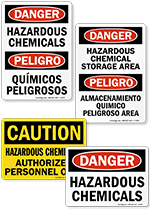OSHA revises rules for reporting workplace deaths

OSHA has announced new rules for reporting workplace deaths. From Elliott Brown
From 14,000 workers killed on the job in 1970 to 4,405 worker deaths in 2013, workplaces have clearly become much safer than they were a few decades ago. However, workers are still exposed to extreme hazards at work and thousands of fatalities are reported each year. In order to prevent work-related accidents, the Occupational Health and Safety Administration (OSHA) has broadened its rules for recordkeeping that tracks workplace injuries and deaths. These new rules will be effective from January 1, 2015 for establishments under the safety agency’s jurisdiction.
According to the revised rules, employers with 10 or more employees must report work-related injuries within eight hours of the accident. Work-related, in-patient hospitalizations, amputations and the loss of an eye must be reported within 24 hours. Previously, employers had to report an accident or illness only if three or more employees were hospitalized due to an incident.
Moreover, OSHA has updated the list of industries that are exempt from keeping records of workplace injuries and illnesses (based on their lower occupational injury and illness rates). The previous list of industries that were exempt from routine recordkeeping was based on the injury and illness data from the Bureau of Labor Statistics (BLS) from 1996, 1997, and 1998 and relied on the old Standard Industrial Classification (SIC) system. The new list of industries that are exempt from keeping routine records of workplace injuries and illnesses has been drawn from the North American Industry Classification System (NAICS) and relies on the injury and illness data from the Bureau of Labor Statistics (BLS) from 2007, 2008, and 2009.
OSHA hopes that the new rules will be more effective in preventing workplace injuries, illnesses, and deaths, and keep both employees and employers aware of best practices for workplace safety and health. In a written statement, David Michaels, assistant secretary of labor for OSHA, said, “OSHA will now receive crucial reports of fatalities and severe work-related injuries and illnesses that will significantly enhance the agency’s ability to target our resources to save lives and prevent further injury and illness. This new data will enable the agency to identify the workplaces where workers are at the greatest risk.”
Learn more about the revised reporting and recordkeeping requirements on OSHA’s website.
Category: News, News / New Products, OSHA











